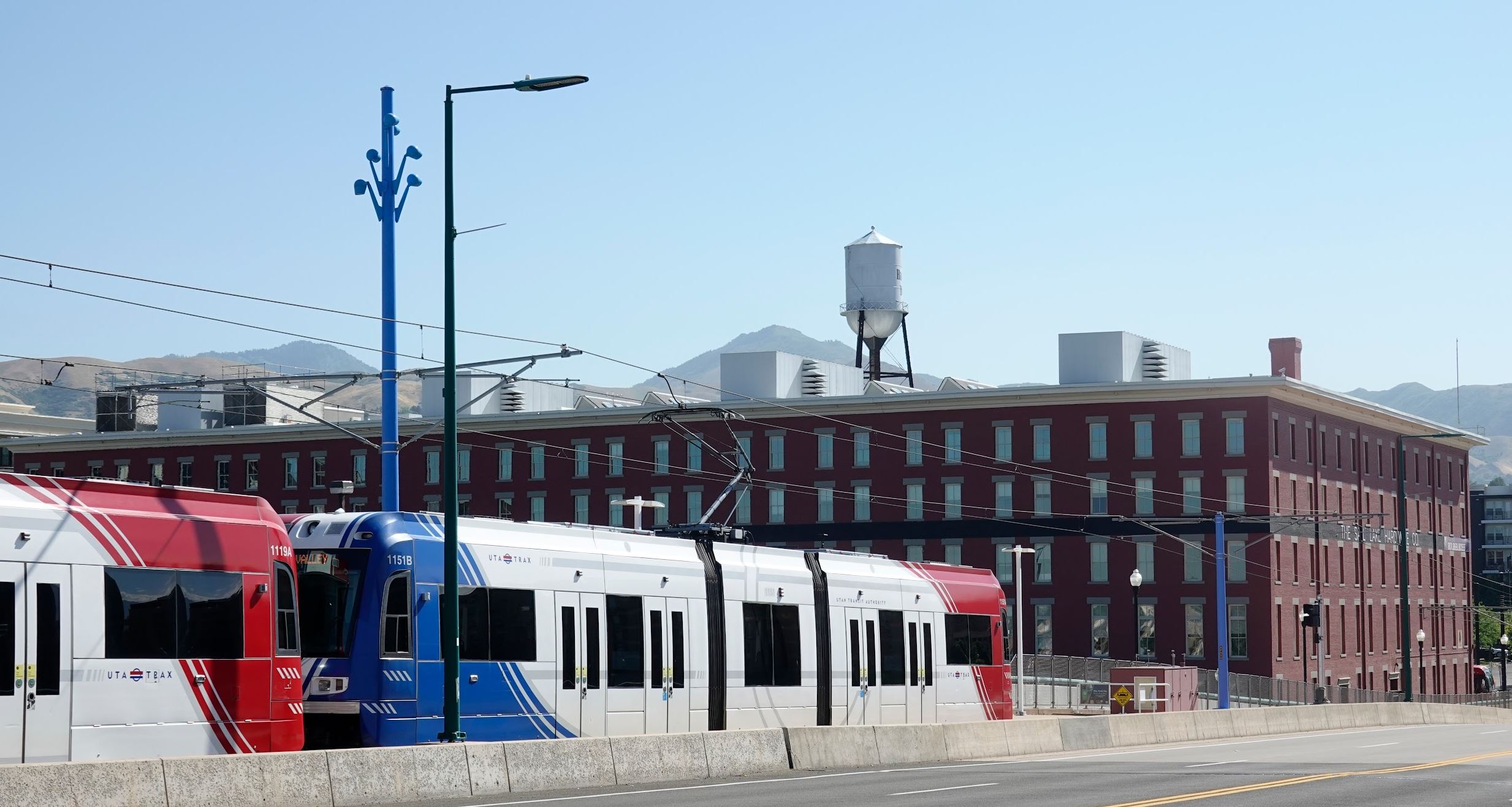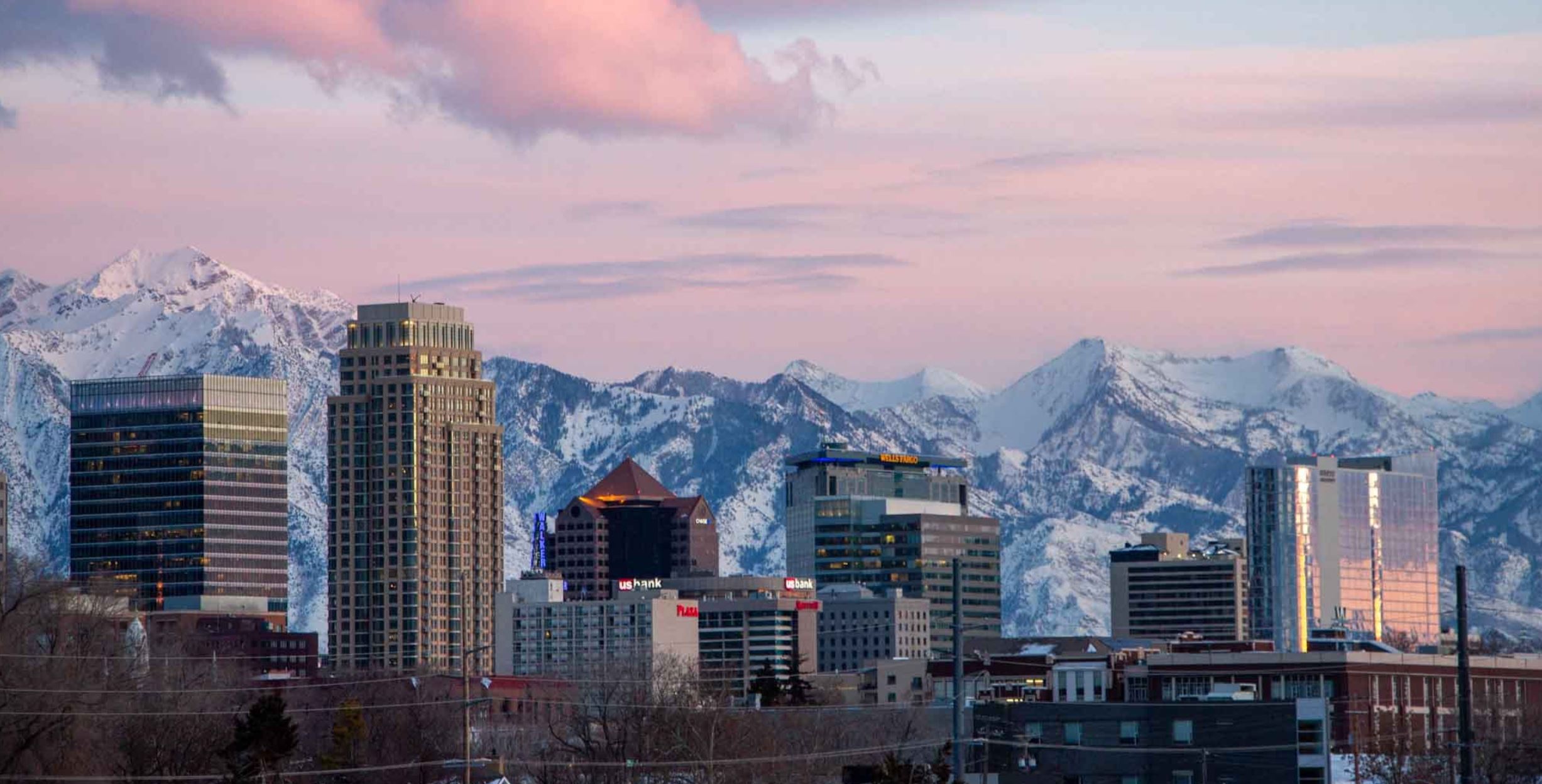By SLCgreen Staff Jude Westwood

Two weeks ago, I flew from Salt Lake City to Columbus, Ohio, to visit my family. I left during the peak of our first wintertime inversion; smog settled so thickly in the valley that I hadn’t been able to see the Wasatch Range in several days. The inversion was top of mind as I nursed a sore throat, feeling envious of my Midwestern family and friends who can take good air quality for granted.
As I sat down for breakfast at my brother’s house on my first morning in Columbus, my 11-year-old nephew focused in on the “I ❤ Clean Air” sticker on my Nalgene.
“Isn’t that kind of obvious?” he asked, eyes squinted with skepticism.
“You would think,” I said, grimacing. I took a moment to think of how to explain to him, and glancing around at our breakfast dishes, I had an idea.
“Here’s the thing, Isaac, you and your family kind of live on a flat plate, right?” I gestured to the plate that his bagel was sitting on. “But you’ve visited your cousins in Utah and seen the mountains there; they live more in a bowl with tall, tall mountains all around. Sometimes, especially in the winter, cold air gets trapped in that bowl under a layer of hotter air that acts like a lid.” I flipped another small plate over my cereal bowl to demonstrate and asked, “Have you seen the grey exhaust that comes out of cars before? What do you think would happen if there were a lot of tiny cars driving around, creating pollution inside my cereal bowl while this plate is on it?”
“That’s gross,” Isaac said, with a look of disgust, “It would all get stuck in there.”
“Yeah, absolutely, it gets stuck! What do you think it would feel like if you were breathing that air?”
“That cannot be good. That’s like worse than cigarettes maybe!”
I laughed at how earnest he’d gotten, “Yeah, it’s pretty bad!”
After thinking for a minute, Isaac asked, “So what do you do about it?”
Collective Action for Clean Air

I like to think of working towards clean air in terms of creative problem solving. We can’t all contribute in the same ways, but we can look at our current habits and find areas to improve within the constraints we have. Here are some things to consider as we work to reduce air pollution:
- Drive Less (or Cleaner): Along the Wasatch Front, around 50% of our pollution comes from transportation. Think through the places you typically drive and see if you can ditch a car trip in favor of walking, biking, or taking transit. If you need to drive, you can still reduce your impact by carpooling and, of course, by staying idle-free.
- Go Electric: Switching to electric appliances, lawncare tools (we’re looking at you, snowblowers!), and heating/cooling systems is also a great way to reduce pollution. If you’re looking to buy a new car, consider purchasing an EV or hybrid.
- Skip Woodburning: I have great memories of gathering with my family by our fireplace during Ohio winters. During an inversion a wood fire can have an outsized effect on pollution, and I’ve had to readjust my holiday expectations while living in Utah. The good news is that getting an electric fireplace is much cheaper than getting an EV.
Stay safe out there!
It’s heartening to see how much we can do to keep our air cleaner, but it’s also important to note that the most important thing you can do is stay safe. Air pollution at any level is a public health concern, particularly for those with underlying health concerns, the old, the young, and pregnant people. Watch the air quality forecast and check current conditions on the Utah Division of Air Quality’s website.
Familiarize yourself with the Air Quality Index and try to minimize your time outside when the air quality is bad. If you do need to be out, consider wearing protective equipment, like an N95 mask.
You can also help keep the air inside your home cleaner by making sure to change your HVAC filters out at least every three months (and more frequently during periods of high pollution). You can find more tips for improving indoor air quality on our website.
Beyond Individual Action
Solving an issue as complex as air pollution takes more than individual action. Phenomenal non-profits and advocacy organizations are working on air quality in Utah. You can find some of them here.

Air quality has also been a long-term priority for Salt Lake City Mayor Erin Mendenhall and SLCgreen. We’re taking action as a city both by improving our internal operations and by creating programs and policies to help residents and businesses reduce emissions. We also recognize that poor air quality doesn’t affect everyone equally, and disproportionately impacts residents on the Westside, lower-income and other under-represented residents, and people with underlying health conditions.
Internally, we’ve made strides in phasing out many of our gas-powered pieces of equipment in the Public Lands Department, using electric alternatives where possible. We’re also electrifying our vehicle fleet, and as of last year, all new city buildings must be net zero emissions and completely electric.
We also received federal funding from the EPA to make a Climate Pollution Reduction plan, not just for Salt Lake City but for the greater Salt Lake-Tooele Metro area. This plan will allow us to identify high-impact opportunities to reduce emissions and to apply for federal funds to implement projects.
As for supporting the community? This next year, the City is launching a new air quality incentive program for residents, so you can exchange gas-powered landscaping equipment for electric alternatives, get better indoor air filters, even get a discounted electric bike. Stay tuned for more information about those new programs over the coming months.
We ❤ clean air and believe every Salt Laker (including us) has a role to play in protecting it.
